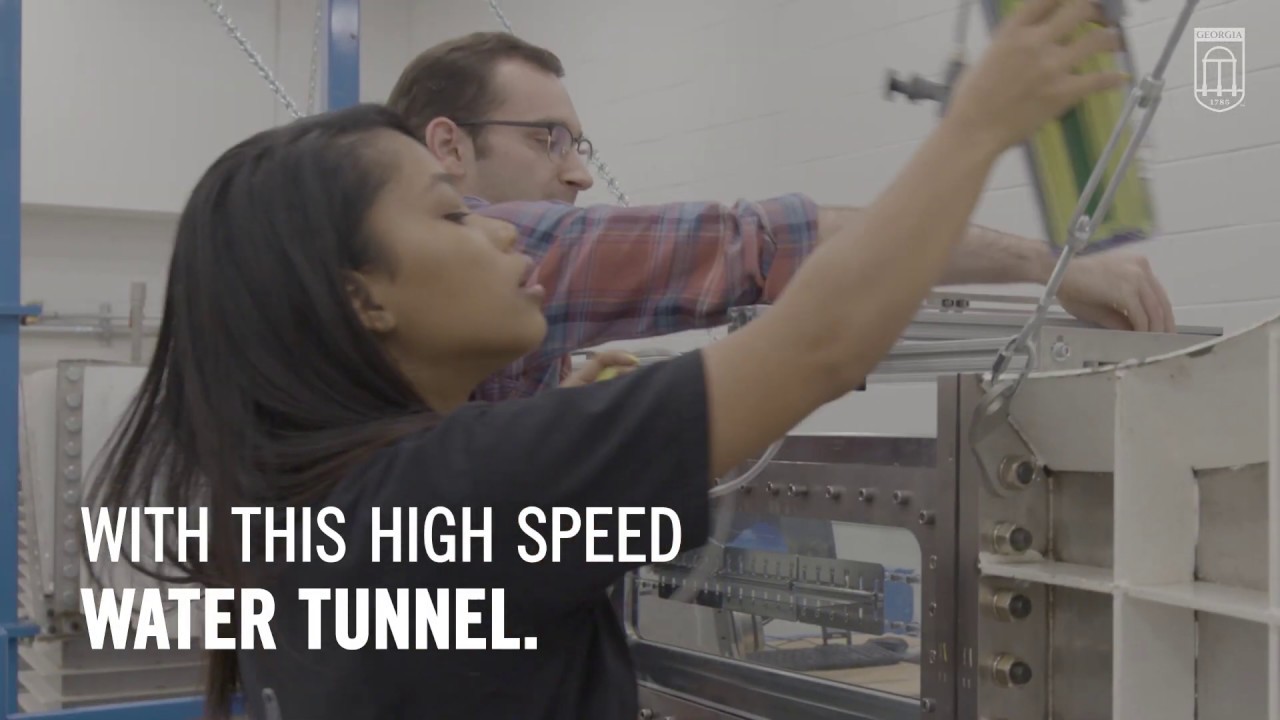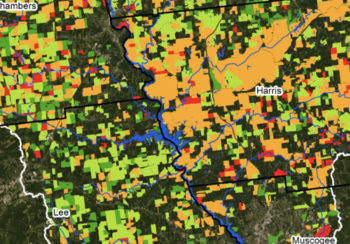The towns that line the I-85 corridor from Atlanta to Raleigh have several commonalities: burgeoning populations, reliance on small rivers and tributaries for water supply and waste disposal, and some of the richest freshwater aquatic biodiversity on the planet.
However, these commonalities lead to shared problems. Because of their growing populations and limited water supply, drought, seasonal low flows, and climate change are increasing the frequency and severity of water shortages, which impact both communities and local ecosystems. In addition, low-flows and the prevalence of septic systems contribute to overloads of nutrients in the water system, or eutrophication, that impacts water quality and harms aquatic species downstream.
A team of University of Georgia researchers, from the Institute for Resilient Infrastructure Systems and River Basin Center recently published a paper that gets at the heart of this issue. The paper, titled, “Water supply, waste assimilation, and low-flow issues facing the Southeast Piedmont Interstate-85 urban archipelago,” was published in the Journal of the American Water Resources Society in May.
“During workshop discussions, we realized that all the cities on the I-85 corridor through the Piedmont faced similar water resource management challenges due to the rapid growth of their populations, their high degree of septic system usage, and the relatively small rivers on which they all depend,” Rhett Jackson, IRIS Affiliate and John Porter Stevens Distinguished Professor of Water Resources in the Warnell School of Forestry and Natural Resources said as he spoke of the genesis of this paper.
Traditionally, cities have sprung up in places where access to large waterbodies have allowed for trade and travel, which dually ensured that citizens had plenty of drinking water and waste removal. However, with the rise of personal vehicles, cities in towns further away from large bodies of water have become more densely populated.
The stretch of cities and towns that the researchers looked at along I-85 are projected to become one of the most densely populated regions in the southeast. But without the ample water supplies that many large cities have, they will face challenges in securing enough water and sustainably disposing of waste.
“People tend to think of the Southeast US as a water-rich region, and it’s true that our average rainfall is fairly high,” explained Seth Wenger, Director of Science for the River Basin Center, and IRIS affiliate. “But we’ve built a number of large cities in relatively small watersheds that naturally have low flow in the late summer. As a consequence, per-capita water availability is often quite low, and many of our cities meet the UN definition for ‘water scarcity’ or even the more extreme ‘absolute water scarcity.’ That’s in spite of the fact that most of our cities have dramatically reduced per-capita water consumption over the last two decades.”
This problem will only become more complex: climate change is projected to lead to increasingly severe droughts and other changes to weather patterns that may impact water availability. As populations grow, cities will have to take further steps to ensure a useable water supply throughout the watershed: managing flow and responsibly handling waste and excess nutrients will be key.
“The issue is threefold,” explained Jackson. “At some point, water use efficiency reaches its limit. You need to send enough water down the sewers to keep the sewage moving so it doesn’t anaerobically digest in the pipes themselves and accelerate corrosion. Communities will need to figure out how to responsibly share water during droughts, as drought conditions are never uniform along the corridor. Waste and nutrient discharges go up nearly linearly with population growth, so cities will eventually have to implement nutrient recovery to avoid downstream eutrophication issues.”
While imposing water restrictions and increasing the efficiency of water used are both tactics that municipalities commonly use when faced with shortages, they’re not without drawbacks. This leaves cities to sometimes fall back on measures that can exacerbate inequities, such as drilling private wells–which drives up water prices, and makes it so that low-income families can’t afford to turn on their tap.
These measures also don’t do anything to prevent the increasing amounts of nutrients discharged into streams and rivers from wastewater—which accumulate and cause eutrophication downstream.
“River flows in the southeast are highly seasonal and flows are naturally very low in late summer and early fall. In these low flow periods, there is little river water to dilute treated effluents. In order to keep the rivers alive and healthy, it will be necessary to improve the quality of discharge effluents as populations increase,” Jackson said of the issue.
These factors impact more than the resilience of the humans who live in these communities: increasing nutrient loads and decreased flows harm the delicate aquatic ecosystems that depend on the streams and rivers in the region. Protecting these ecosystems is highly important: this region is one of few freshwater biodiversity hotspots of the world, and is home to many endemic and imperiled species.
The researchers have identified six ways for city planners and water resource managers to build resilience within their communities and ecosystems. Read on to learn more about the actions communities can take to build resilience in the face of water scarcity:
Increase large-scale water-use efficiency
More efficient use of water means more to go around. However, there is an upper limit to how efficient cities can become; without enough water moving through the system, sewage conveyance systems flow too slowly, degrading pipes and causing damage.
Adopt indirect potable reuse or closed loop systems
Since constantly increasing efficiency is ultimately undesirable, the next step is to create policies that encourage water reuse. Creating a “closed-loop system” calls for treating wastewater to drinking water standards, and only using additional water to make up for what is lost to evaporation.
Allow for water sharing during droughts while regulating inter-basin transfers to protect aquatic ecosystems
Weather conditions rarely impact every city within the I85 archipelago equally—meaning that when one city is in drought, it is unlikely that all of them are. In some places, water-sharing infrastructure is already in place, allowing cities to move water between watersheds, and creating a collaborative framework for easing water stress across the region. However, water sharing also comes with caveats—there are fears that wealthy, or highly populated areas could import water from other places, preventing that water’s use for other important things. There are also concerns that transfers could impact aquatic ecosystems.
Increase nutrient recovery and reduce outputs of carbon and nutrients
The above steps do not address increased carbon and nutrient discharges in wastewater from growing populations. In addition to increasing water efficiency, creating closed loop systems, and using inter-basin transfers to share water, cities must contend with how to manage their waste so as not to harm downstream water quality. This is generally done through nutrient recovery—which both improves water quality downriver, and creates locally accessible sources of fertilizer.
Use green infrastructure and stormwater management to reduce nonpoint pollutants and decrease urban heat island effects
Another way to improve water quality is through the implementation of green infrastructure and other “offsets,” including riparian forest restoration, teaching homeowners about proper use of fertilization, keeping cattle out of streams, facilitating agricultural nutrient management, and reducing runoff from roads.
Apply the Climate Risk Informed Decision Analysis (CRIDA) framework to better project uncertainty into future plans
In the past, water managers have based estimates for water use on past numbers. However, with rapidly growing populations and a changing climate, estimates based on the past are unlikely to cut it. CRIDA will help managers to incorporate projections of streamflow, climate, population and water-use trends into planning, so that managers can plan for a prepared future.






